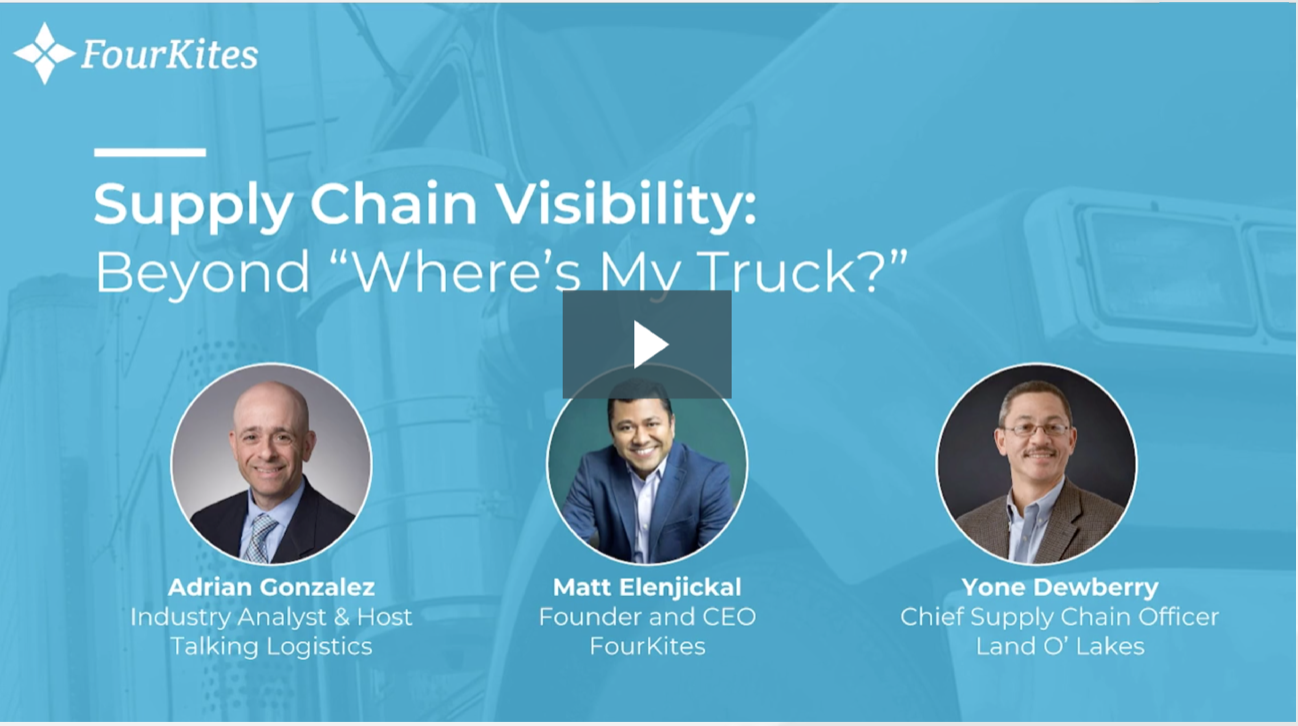I’ve been an industry analyst for over 20 years and achieving timely and accurate supply chain visibility has always been — and continues to be — a top priority for companies across all industries.
It’s an ongoing challenge because supply chains continue to get more fragmented, more global, and more dynamic. The good news is that advancements in technology are addressing some of the historical challenges companies have faced in gathering, sharing, and analyzing real-time data from many different systems and trading partners.
This is certainly true in the transportation realm, where real-time freight visibility solutions are helping companies answer — quickly and accurately — Where’s shipment? Where’s my order? Where’s my truck?
But the value proposition of supply chain visibility goes beyond answering those questions. How are companies leveraging supply chain visibility to deliver business benefits not just in transportation but across other supply chain and logistics functions?
That was the main question I explored with Yone Dewbery, SVP and Chief Supply Chain Officer at Land O’Lakes, and Matt Elenjickal, CEO and Founder of FourKites, in a recent video webinar.
The Maturing of the Supply Chain
I began the conversation by asking Yone why supply chain visibility is more important than ever today.
“It goes along with the overall maturing of the supply chain,” says Yone. “If you look back 20-30 years ago, most supply chains were very functionally focused — that is, we only cared about our own separate function, whether it was planning, logistics, or operations. Then supply chain started to mature and we started to care about the end-to-end process. Then we matured some more and we started to focus on customer service. And today we’re at the point where the big focus is on customer experience.
“The way we describe customer experience in our organization is ‘You pay for the product, but you actually buy the entire experience’. You’re not just judging the product, you’re judging the experience and the cornerstone of that experience is visibility. It’s about when and where is my product, and where and when is it going to show up.”
Yone added that the increased velocity of supply chains is making real-time visibility even more critical. “Supply chains are moving so fast, you really need to know ‘the when and the where’ in real time because that allows us to mitigate any disruptions in real time. Visibility also addresses variability; it provides the ability to predict when the shipment is going to get there. All of these factors combined is why visibility has become so important.”
The Broader Value Proposition of Freight Visibility
What is the broader value proposition of having this visibility? In Matt’s experience working with clients like Land O’Lakes, “it’s very evident that companies can apply location information to various aspects of the supply chain.” He shared the following examples:
“If you’re in warehousing and you know exactly when a truck is going to show up, then you can have better dock scheduling, you can have better labor management, you can sequence your warehouse operations better — the picking, packing, staging, etc. So now you’re exetending [the value of visibility] beyond transportation into warehousing.”
Without visibility, you typically have this “endless chain of phone calls” between customers, the customer service organization, logistics, and carriers trying to determine the status of shipments and deliveries. “Now customer service can log into our system and see what is happening [without having to call logistics],” says Matt. “Even better, end customers also have that visibility and they don’t have to call the shipper. At some of our customers we have seen a 65 percent drop in incoming call volume to customer service.”
Matt shared additional examples related to inbound planning and inventory management.
“What we have seen is that the sky’s the limit when it comes to applying real-time data across your organization,” says Matt. “It begins with answering that very simple question — Where’s my truck? — and then by taking a crawl, walk, run approach you can apply that real-time data across the supply chain to create the end-to-end synchronous supply chain, which is the holy grail many companies are trying to achieve.”
What were some of the key capabilities Land O’Lakes was looking for in a visibility solution? How does enhanced visibility help improve shipper-carrier relationships? What is predictive capacity management and how does it benefit the industry?
I encourage you to watch the full webinar for insights on those questions and more. Then post a comment and share your insights and perspective on the topic!











